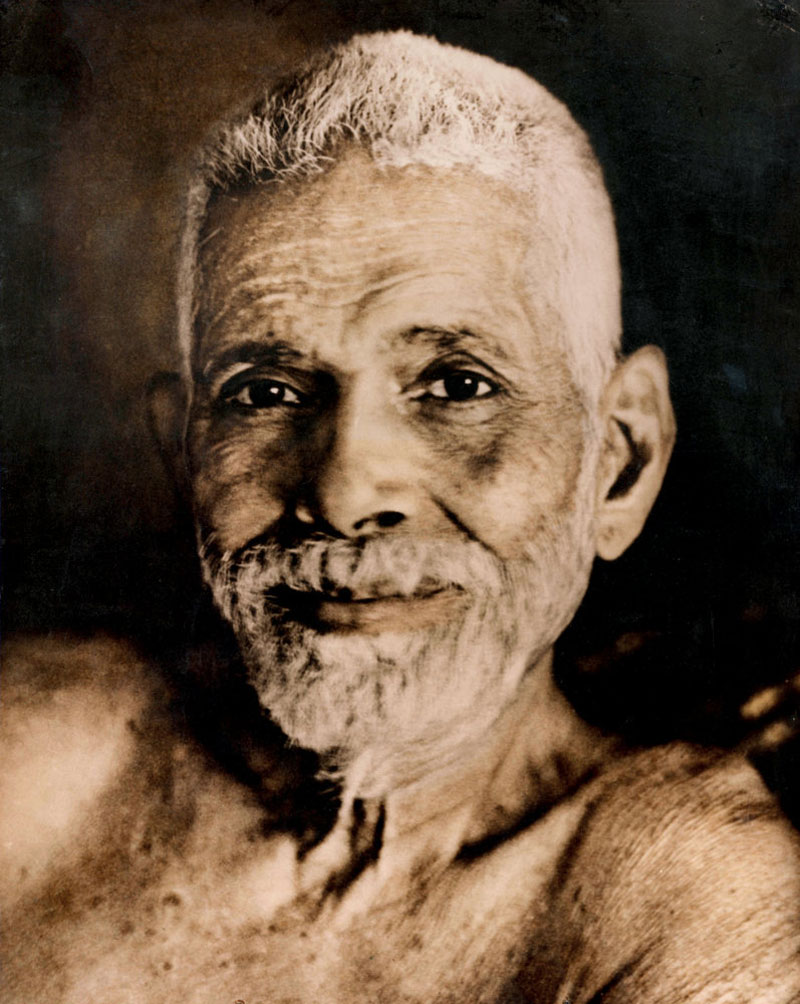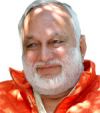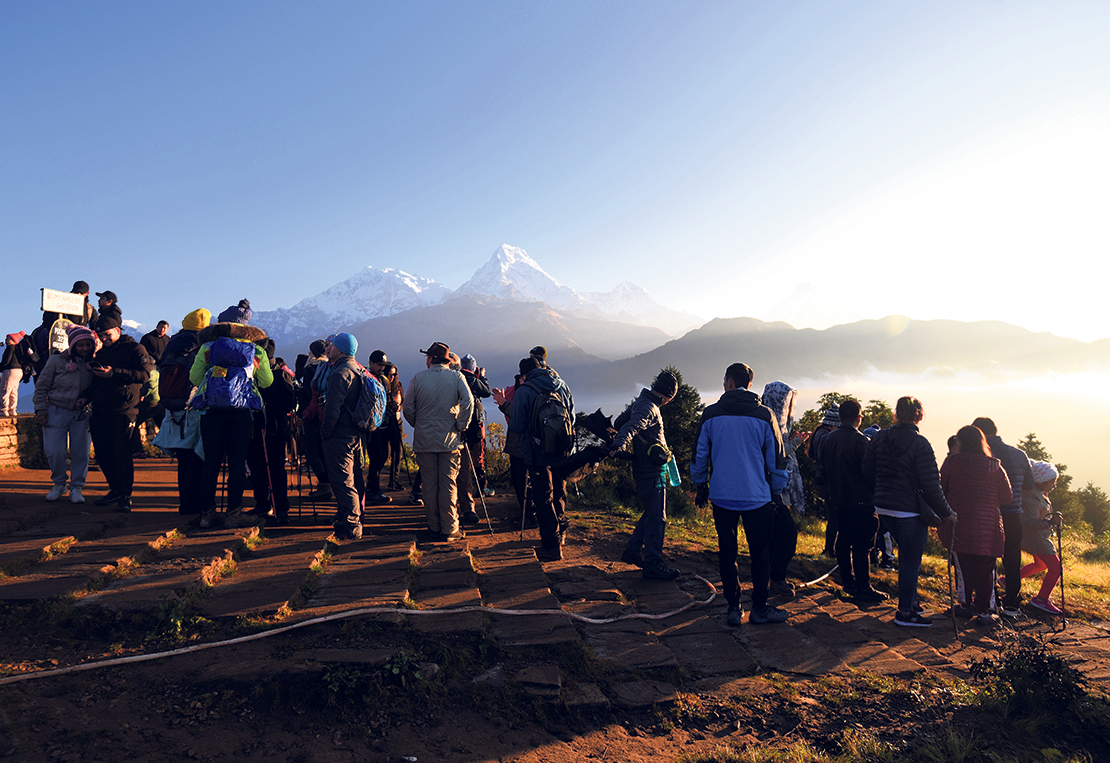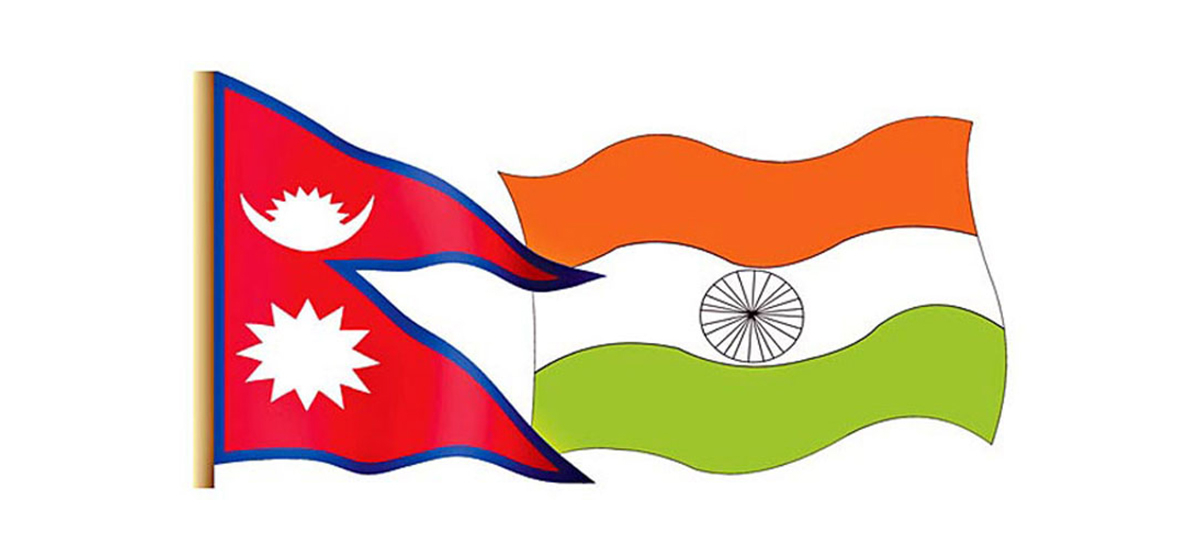
OR

More from Author
Although fully enlightened, Ramana lived the simplest of lives and remained mostly in silence
Ramana Maharshi was the epitome of simplicity. He lived what he preached. It so happened that the first President of India, Dr. Rajendra Prasad, came to visit Ramana Maharshi in his ashram, at the base of Arunachal. The ashramites started cleaning and decorating the ashram for the occasion. It was the tradition at Ramana ashram to feed animals first, followed by the beggars and guests.
Ashram residents would be the last to eat. This practice started by Ramana continues in the ashram.
On that day the beggars and monks were told to stay under a tree a little further away from the ashram and that they would be fed there. The president came and went straight to Ramana’s hut to meet him. But he was not there. Everyone was perplexed because Ramana never left his hut. The president waited for him there and the ashramites started to search for Ramana but couldn’t find him anywhere. After a long search, they found Ramana sitting under the same tree designated for the beggars. The ashram residents persuaded him to come back to his hut. Once he reached the hut, Rajendra Prasad touched Ramana’s feet in reverence and asked him why he was sitting with the beggars.
Ramana answered, “It was repeatedly announced in the ashram that the beggars should go and wait for their meal under that tree. I also have been a begging monk my whole life. That’s why I went and stayed with the other beggars.”
Today is the Mahaparinirvan day of this rare saint who lived in South India in the past century.
Although fully enlightened, Ramana lived the simplest of lives and remained mostly in silence. He was born at 1.00am on December 30th 1879 in Tiruchuzhi, a small village in Tamil Nadu, 30 kilometers from Madurai, the famous Hindu pilgrimage in South India. He is considered the anshavatar, part manifestation of Shiva. Ramana came to his abode, the Arunachal hill, two hundred kilometers east of Madras, at the age of seventeen and lived there for the next 44 years. Arunachal is thought to be the Kailash of South India and is considered the physical manifestation of Shiva.
Ramana’s father, Sundaram Ayyar, was a rural lawyer who was known for his honesty and purity. All the people in the area respected his honesty and truthfulness, even thieves. One day a group of thieves stole goods from a bullock cart. When they found that the goods belonged to Sundaram, they promptly returned it. Even the thieves did not like robbing him. His mother Alagamma was also equally pure and saintly. When Ramana was 12, his father died and the family’s difficult times started. Since they lived in a joint family, Ramana’s uncle, Subbir, took on the responsibility of Ramana’s family, and they moved to his house at Madurai. Subbir loved Ramana dearly. He was admitted to Scott’s Middleschool, but Ramana had no interest in formal studies. He would rather spend his time playing, wandering around and meditating in the nearby temples.
One day an elderly relative came to visit Subbir’s house. Ramana asked him where he was from. When the relative said that he was from Arunachal, Ramana was thrown into a sudden ecstasy.
Ramana had often heard of Arunachal but when he realized that the holy hill was a real tangible place on earth that men could visit, he felt a magnetic pull towards Arunachal.
An event that occurred when Ramana was 17 brought about the great turn in his life. One day in mid-June 1896, he had the experience of death. In his own words, “The shock of the fear of death drove my mind inwards and I said to myself mentally without actually framing the words, ‘Now death has come; what does it mean? What is it that is dying?’”
He felt his consciousness leave his body. His body lay dead but his consciousness felt fully alive.
For the first time he experienced the eternal nature of the soul. This event made him absolutely introverted and he lost all interest in his studies and any other external work. Annoyed by his lack of interest in anything, his brother Nagaswami scolded him, “You don’t know how to study and neither do you help out in household chores. It is better that you become a wandering monk.”
One day Nagaswami asked Ramana to go and pay his college fees and handed him five rupees.
Instead of paying his brother’s college fees, Ramana used the money to go to Arunachal. When he found that it cost just three rupees to reach Arunachal, he left two rupees in an envelope along with a note for his brother that became famous later. It said, “I am leaving home in search of my lord as it is his wish. This is a spiritual journey. None of you should be sad and don’t waste money and energy trying to find me. I haven’t paid your college fees. I have taken three rupees and the rest of the money is in the envelope.”
When he reached Madurai station, it was already past the departure time of the train to Villupuram, but miraculously it only left once Ramana got on it. A Muslim priest who suddenly appeared in the train saw that Ramana was divinely possessed and asked him where he was heading. The priest then informed Ramana that the train was going to Tiruvannamalai and disappeared as mysteriously as he had appeared. Ramana reached Tiruvannamalai on the morning of September 1, 1896, where after the darshan of the Arunachal temple and hill, he went into a deep and blissful trance. After that he never left Arunachal till he left his body on April 14, 1950.
When he reached Arunachal he had very few possessions with him. However, after the darshan of his beloved Arunachal he decided to get rid of whatever little was left with him. It included a little money, food and clothes. He tore a piece from one of his shirts and turned it into a loincloth, which became his only possession from then on. He started meditating inside the temple of the thousand pillars. When others of his age saw that he was entranced in deep meditation they started to play pranks on him. Ramana was fed up with their pranks so he left his spot and started meditating in the basement of the temple where there was a Shivalinga, which was called the Patallingam. The youths stopped bothering him there but the Patallingam was heavily infested by insects since no sunlight reached there. The insects bit him all over his body but Ramana, who was in deep samadhi, took no notice.
Seeing such deep vairagya (detachment) in a young boy, a local sadhu, Shosadri Swami, started to care for Ramana. He started protecting Ramana from the local boys as well as from the insects. He then shifted Ramana to a safe place in a different temple. Slowly Ramana’s vairagya and his ability to sit in one place, drowned in bliss for days, made him famous in the area. Curious folk started coming to have darshan of this silent young saint. Ramana spent time in various temples of Tiruvannamalai and in the end he came to the Virupaksha cave in the Arunachal hill. Eventually Ramana Maharshi and the Arunachal hill became synonymous with each other. Due to his presence Arunachal became famous around the world. If someone came and asked him a question, he would only gaze at the questioner with utmost compassion. After a while the questioner’s questions would disappear and he would be filled with great peace and spiritual fulfillment.
The Superintendent of British Police in Vellore, F. H. Humphreys, came in contact with Ramana Maharshi in the most interesting manner. Humphreys became the Superintendent of Police of Vellore at the age of 21. Due to his past life sanskars, Humphreys was a clairvoyant seer and regularly had spiritual visions. While meditating, he started to frequently see the vision of a young saint clad only in a white loincloth sitting on a hill. He made a sketch of his recurrent vision and started showing it around. The locals said that it must be Ramana Maharshi of Arunachal.
Humphreys came to Arunachal on his motorcycle all the way from Vellore, eighty-seven kilometers away. He parked his bike at the base of the hill and started scaling it in his heavy policeman’s uniform. The extreme midday heat and the uphill climb left Humphreys exhausted and parched.
Ramana was sitting quietly under a tree as usual. When Humphreys came near him, Ramana kept on looking at him without blinking. They were both of the same age. Humphreys couldn’t take his eyes off Ramana’s gaze. After 15 minutes Humphreys felt as refreshed as he had ever been before. His exhaustion disappeared and he felt as if he was bathing under a fresh spring.
Humphreys had come there with countless spiritual questions but in Ramana’s presence, his questions started to sublimate. Neither did Humphreys ask any question, nor did Ramana have to utter a word. Humphreys felt so light that he thought he could fly. Without saying anything to Ramana, he started to climb down the hill. He was so elated that he spontaneously broke into a dance. While climbing up he was a serious police officer full of questions and queries; on returning he was happy and joyous like a little boy, without a tinge of worry on his face. Such was Ramana Maharshi’s magic.
Humphreys was Ramana Maharshi’s first western disciple and he visited him frequently. His love for Ramana started to grow and he asked him if he could leave his profession and give up Christianity. Ramana said, “No, you need not renounce anything at all. If the need to renounce is so great then why don’t you renounce your assumption that you are this body? Search deeply within for your real self. To go into this search, there is no need to quit your profession or your religion.”
Along with Humphreys, there were a few other seekers from the West who knew the value of Ramana Maharshi and made him known to the world. Among them were Paul Brunton, Arthur Osborne, SS Cohen and Major AW Chadwick.
Such was the power of Ramana’s silence. Ramana was in silence most of his life and his silence was totally alive and powerful. It would take seekers to a deeper space and transform them more than did the discourses of many masters. Just one compassionate glance by him would bring deep peace and contentment to many of his devotees.
swamiarun@gmail.com
You May Like This

Exploring opportunities and Challenges of Increasing Online Transactions in Nepal
Recently, I embarked on an errand for my parents. Upon completing my purchases, I proceeded to the checkout. The cashier,... Read More...

Why Federalism has Become Risky for Nepalese Democracy
The question arises, do federal or unitary systems promote better social, political and economic outcomes? Within three broad policy areas—political... Read More...

Nepal's Forests in Flames: Echoes of Urgency and Hopeful Solutions
With the onset of the dry season, Nepal's forests undergo a transition from carbon sinks to carbon sources, emitting significant... Read More...



Just In
- 16 candidates shortlisted for CEO position at Nepal Tourism Board
- WB to take financial management lead for proposed Upper Arun Project
- Power supply to be affected in parts of Kathmandu Valley today as NEA expedites repair works
- Godepani welcomes over 31,000 foreign tourists in a year
- Private sector leads hydropower generation over government
- Weather expected to be mainly fair in most parts of the country today
- 120 snow leopards found in Dolpa, survey result reveals
- India funds a school building construction in Darchula








_20220508065243.jpg)








Leave A Comment